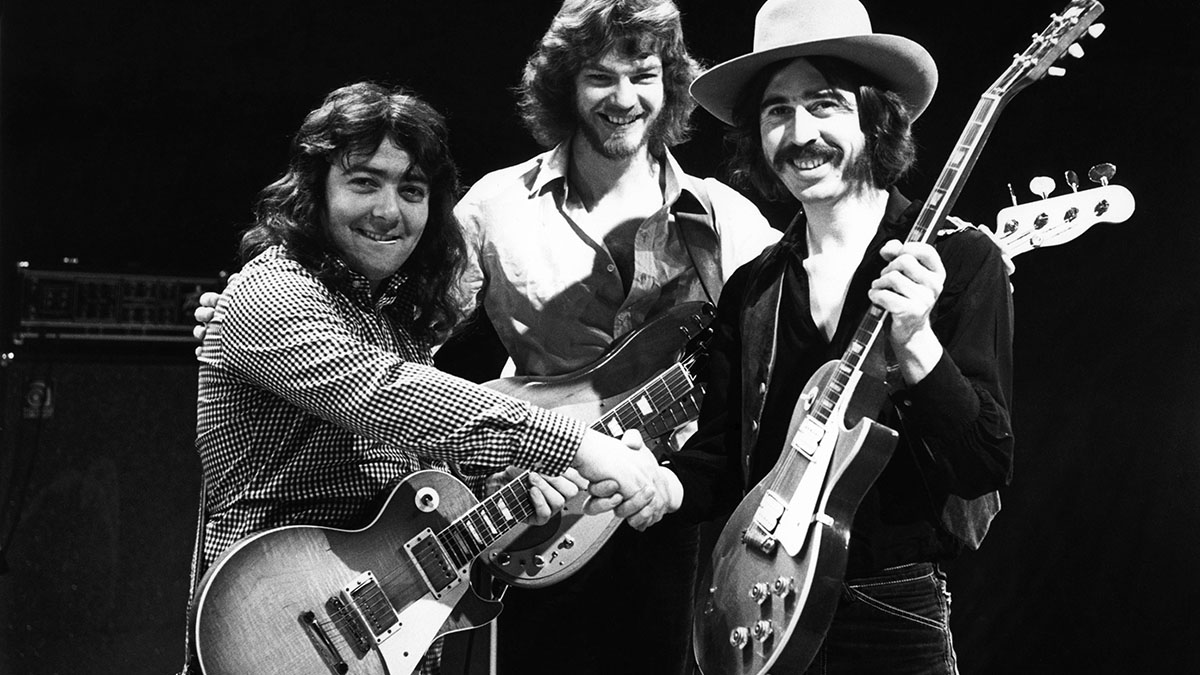
Whitesnake was the brainchild of David Coverdale after his exit from Deep Purple in 1976, and the band has been going for almost five decades. Whitesnake has had a revolving door of some of the best musicians in rock history, but Coverdale remains the only constant member.
Some of the guitarists to have graced the stage alongside the frontman are Steve Vai, John Sykes, Vivian Campbell, Warren DeMartini, Doug Aldrich and Reb Beach, as well as studio ace Dann Huff who played the solo on the huge hit Here I Go Again when it was re-released in the late ’80s.
Throw in drummers like Cozy Powell, Ian Paice and Tommy Aldridge, bass players Marco Mendoza and Neil Murray as well as keyboard legend Jon Lord, and rock royalty runs right through the history of the band.
However, we’re at the early incarnation of the band featuring the bluesy twin-guitar attack of Bernie Marsden and Micky Moody. Both players were in the band from its beginning in 1978 until the mid ’80s, when Coverdale began to focus on the arena-ready style of the late ’80s, and less of the blues association.
The group’s early sound owes a lot to Coverdale’s time in Deep Purple, but also has influences from artists such as Freddie King, as well as John Mayall’s Bluesbreakers, Fleetwood Mac, and Cream.
Some of Whitesnake’s biggest hits were co-written by Marsden and/or Moody, including Fool For Your Loving and Here I Go Again. Both those songs were initially recorded in a far more bluesy fashion in the early 80s, before they each got a re-imagined ‘hair metal’ treatment later that decade.
Somewhat ironically, when Coverdale and company were leaving the blues foundation behind in the mid to late ’80s, many bands of the time were still heavily drawing their influence from early Whitesnake.
Our track this month is rooted in the late 70s and early 80s, blues-influenced era of Whitesnake, and has a riff built upon harmonising 4ths in the key of G minor (G-A-Bb-C-D-Eb-F). Playing 4th harmonies in that key simply means that we’re plucking G and C together, or F and Bb and so on. It’s an easy pattern to play, and basically always sounds good.
Classic tracks like Fool For Your Loving, Money For Nothing and Smoke On The Water are built using this approach. There are plenty of non-diatonic notes here too, including Db the b5th of G minor blues scale (G-Bb-C-Db-D-F).
This scale is also used in the solo, as is C minor blues scale (C-Eb-F-Gb-G-Bb). The track has a shuffle feel so it’s all played with a strong emphasis on the 1-2-3-4 of each bar, with a count that highlights 1 & a, 2 & a, 3 & a, 4 & a.
Get the tone
Amp Settings: Gain 7, Bass 8, Middle 7, Treble 6, Reverb 3
It’s very much classic rock tone territory, so a humbucker pickup would be ideal if possible. If not, back off a single-coil’s tone, or do so on the amp. You’ll need to make sure the tone is not too bright and has a good amount of Marshall-style power amp gain. It’s not overly saturated, so be careful not to overdo the preamp gain. A touch of reverb might also be a good idea.
Playing Notes (rhythm)
There’s a lot of staccato notes in the rhythm guitar part, so clip the main riff’s doublestops (as shown in the notation, dots below notes) with your fretting hand.
Playing Notes (solo)
Finger vibrato should be given a good deal of attention (Bernie’s was slow and wide), and pay careful attention to the intonation of the string bends, too.







